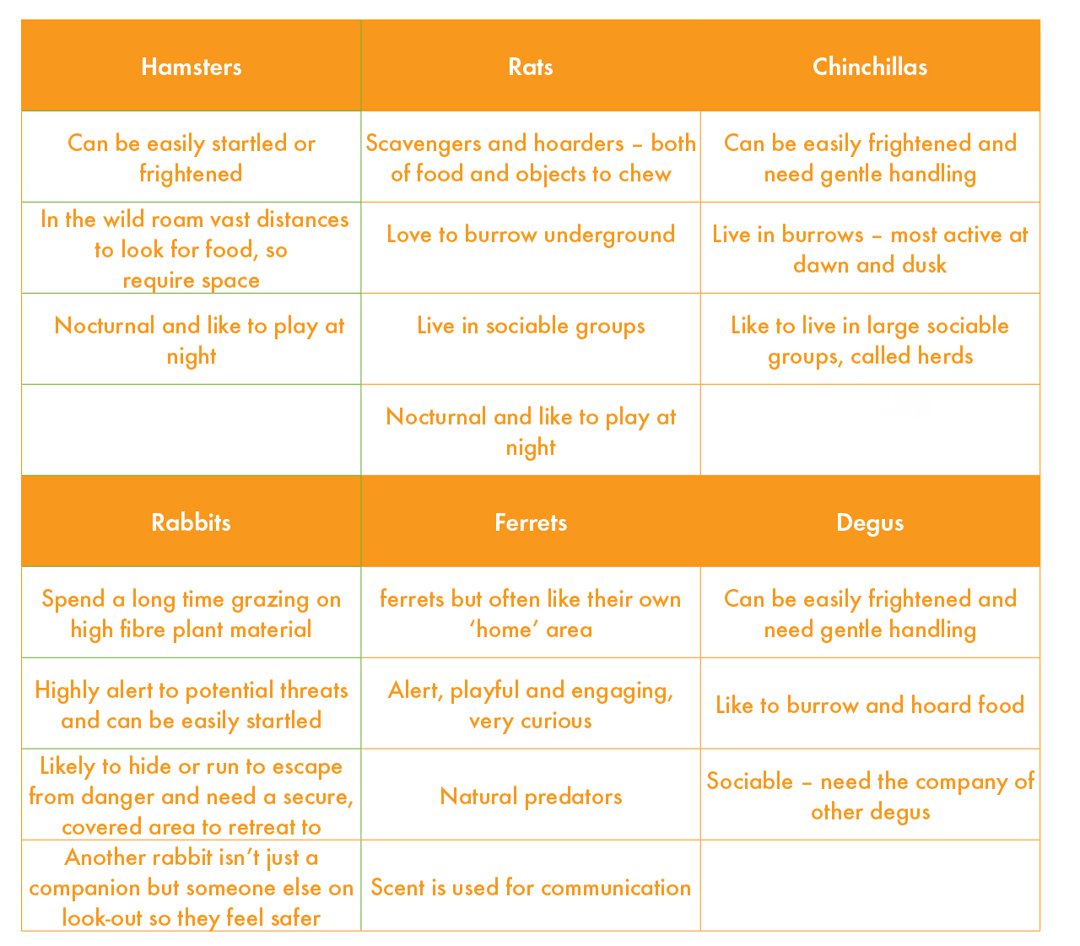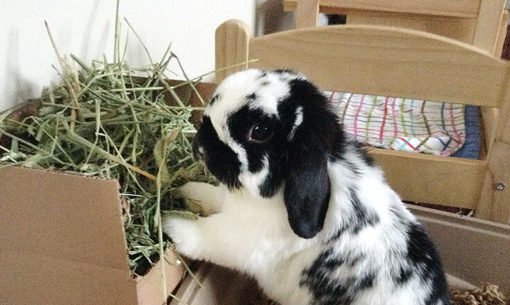Lesson 4 – No place like home
Having a safe and comfortable home is important for both small pets and people. In this lesson we’ll be talking about what pets need from their home. The topics we’ll be covering include:
- Natural behaviour
- Space and Exercise
- Companionship
- Environmental enrichment
Natural behaviour
A good starting point when thinking about how to create the perfect home for your small pet is to think about how they would live in the wild. The behaviour they express there is the behaviour they will want to express in captivity in order to be happy.

Choose a pet from the table and think about what they might need in their home. Use the list below for inspiration:
- Space to run around
- Enough room to live with friends
- Somewhere to hide
- A cosy place to snuggle with a friend
- Somewhere to build tunnels
- An area to nibble on grass
- Places to explore and look for different kinds of foods
- To be able to spot danger easily
- To have a time when it’s dark and the lights are all switched off
- To have some quiet time away from people
- Areas to climb, or play with lots of toys
- Protection from the cold or very hot weather
- Same species – having a friend of the same type means they are more evenly matched. A large pet can accidentally hurt a smaller pet.
- Male or female – if a male and female are kept together, they will have babies. That is not always a good idea. Either the male or the female can be neutered by a vet – this means having an operation to stop them having babies. Males will sometimes get along with other males but not always. Females usually can live with other females without fighting, but not always.
- Old and young – sometimes an older animal will accept a younger animal more easily than one of the same age, but not always!
- Hiding food around the cage so the pet has to search for it
- Hiding food in toys so there’s a game involved in eating
- Providing tunnels or soil or sand to burrow into
- Providing sand baths
- Providing different kinds of toys
- Taking toys away so they can be brought back later and they seem new again
- Hanging food from branches or heights
- Providing sleeping platforms or beds in lots of different locations
- Adding natural branches from trees for chewing
Space and Exercise
Small pets can be very active. Rabbits like to ‘binky’ (jump up in the air) when they are happy so their hutch needs to be at least a metre tall. They also need to be able to complete at least several hops, so their hutch should be about 3 metres long – that’s about the same as if a tall man lay down on the ground with his arms stretched out above his head! They will also need an area within their hutch to hide away in or to have a nice nap.
Rabbits also have to live with other rabbits – usually they are happiest in pairs – so there needs to be enough space for them to run around together. On top of that they will need outside space so they can explore and dig and graze.
Rabbits often live in outdoor hutches in some countries like the UK but in the USA most rabbits live indoors and often have access to rooms in the house. Those rooms need to be carefully adapted because rabbits will chew carpets, wires and even wooden furniture!
Smaller pets are happier with a smaller space and you may have their cage in your bedroom or living room. Remember that the cage has to be the right type but also where the cage is located. If it’s left near a window all day the pet could over heat and if it is in a main room where there is lots of noise in the evening it might be distressing for pets that like that time to be quiet.
Companionship
Many small pets like to live with a companion. One of the few exceptions are Syrian hamsters who tend to fight when in the same space as another hamster. Even pets that live alone often like to be able to smell, hear or see a pet of the same species close by.
Here are some tips on choosing a friend for your pet:
It can all be very confusing! A vet or a pet shop worker may be able to help you find the right companion for your pet and give you some tips on how best to introduce them so they slowly get used to each other over time.
Environmental enrichment
Imagine living in the same rooms and one small garden all the time. Life gets pretty boring right?
It’s the same for pets. Scientists have come up with a concept called Environmental Enrichment. It means making the animal’s surroundings more fun and interesting!
Examples include:
-
See if you can think about ways to make your pet’s life more interesting.
We hope this lesson has left you feeling inspired to create an amazing home for your pet. Don’t forget to complete our special project as this time we’re asking you to apply your new scientific skills to add your own suggestions and help our expert vets and scientists.



